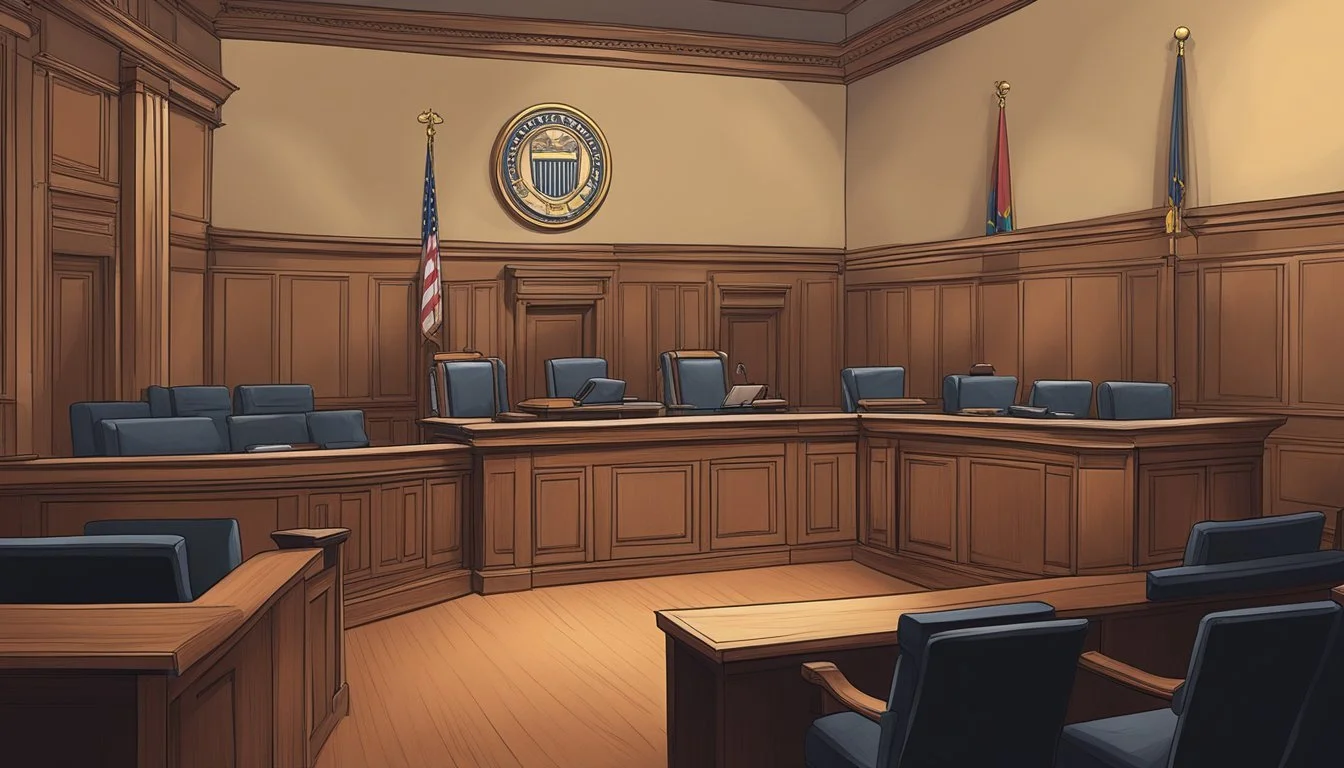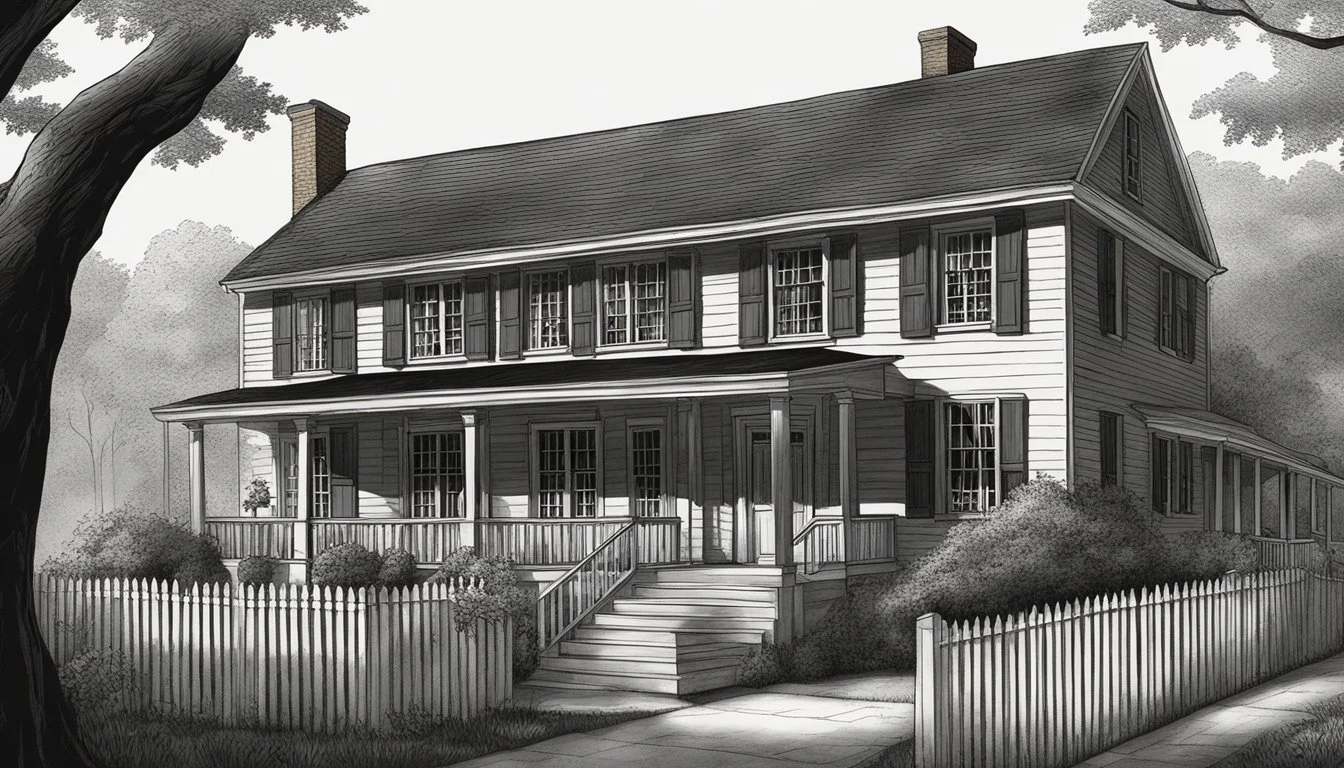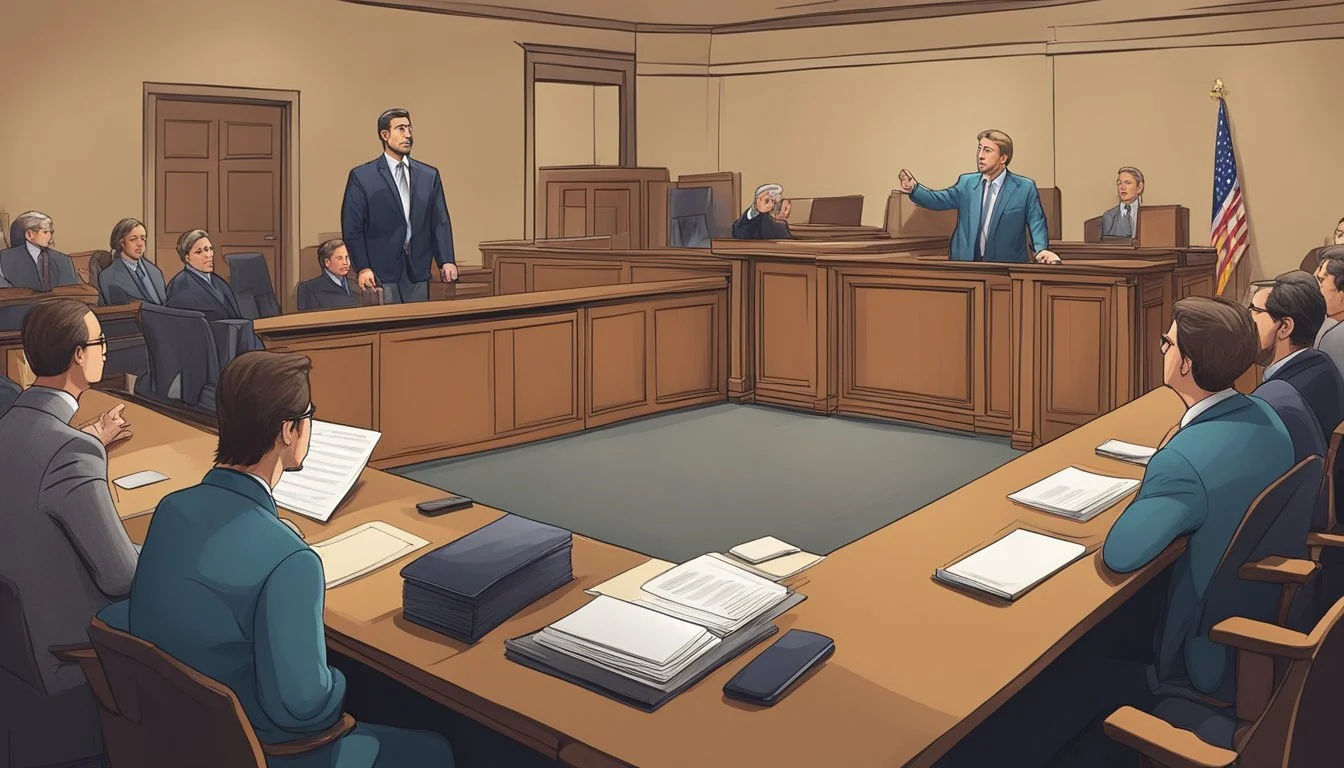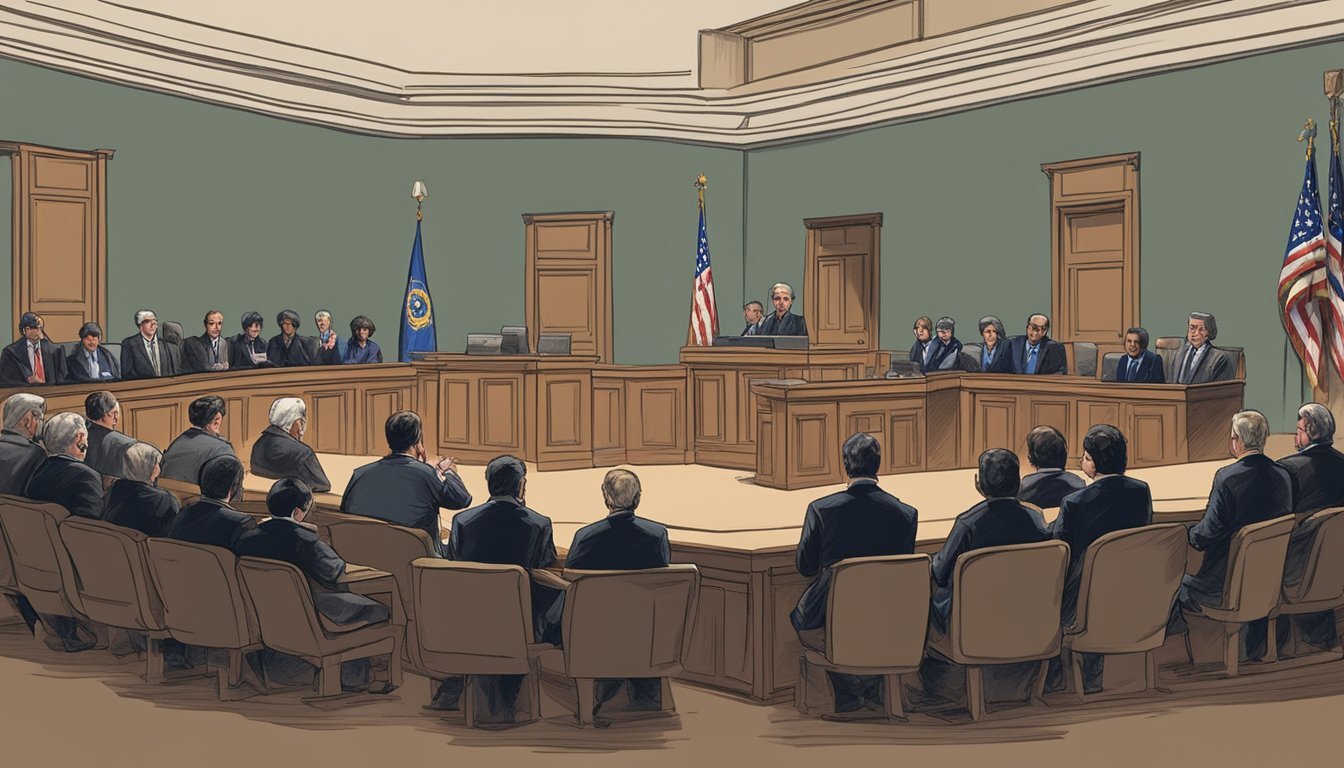Reenacting Tragedy: The Use of Dramatizations in the Menendez Documentary
Examining Visual Storytelling Techniques
The Menendez Brothers case has captivated public interest for decades, and a new Netflix documentary aims to shed fresh light on this infamous true crime story. Released on October 7, 2024, "The Menendez Brothers" offers viewers a unique perspective by incorporating dramatizations and tapped phone calls from Erik and Lyle Menendez themselves.
The documentary's use of dramatizations serves to bring the events surrounding the 1989 murders to life, allowing viewers to engage with the story on a more visceral level. This storytelling technique, combined with actual recordings of the brothers, provides a compelling narrative that blurs the lines between fact and dramatic interpretation.
True crime enthusiasts and newcomers to the case alike will find the documentary's approach intriguing. By reimagining key moments and presenting them alongside real evidence, the filmmakers invite viewers to reassess their understanding of the Menendez brothers' story and the complex circumstances surrounding their conviction.
The Menendez Family Background
The Menendez family's story is one of wealth, privilege, and ultimately tragedy. Their seemingly perfect life in Beverly Hills masked dark secrets and complex dynamics that would eventually lead to a shocking double murder.
Jose and Kitty Menendez: Profiles of the Victims
Jose Menendez was a Cuban immigrant who achieved the American dream. He rose to become a successful entertainment executive, known for his business acumen and drive. Kitty Menendez, born Mary Louise Andersen, was a former beauty queen and socialite.
The couple lived a lavish lifestyle in their Beverly Hills mansion. Jose was strict and demanding with his sons, pushing them to excel. Kitty struggled with depression and substance abuse issues.
Their marriage was reportedly strained, with rumors of infidelity and emotional distance. Despite outward appearances, the Menendez household was far from idyllic.
The Menendez Brothers: Lyle and Erik's Upbringing
Lyle and Erik Menendez grew up in an environment of privilege and pressure. They attended elite schools and had access to luxuries most could only dream of.
Their father, Jose, placed immense expectations on his sons. He demanded academic and athletic excellence, often using harsh methods to motivate them. Erik showed promise as a tennis player, while Lyle struggled to meet his father's standards.
The brothers' relationship with their mother, Kitty, was complicated. She was described as both overprotective and emotionally unstable.
As they entered their teenage years, both Lyle and Erik began exhibiting behavioral problems. They were involved in petty crimes and struggled academically, creating tension within the family.
The Murder and Immediate Aftermath
On August 20, 1989, a shocking tragedy unfolded in a Beverly Hills mansion. The events of that night and the subsequent police investigation would captivate the nation for years to come.
The Night of the Tragedy
Jose and Kitty Menendez were shot multiple times in their living room. The brutal attack occurred shortly after 10 PM. Neighbors reported hearing what sounded like firecrackers.
Lyle and Erik Menendez, the couple's sons, were not home at the time of the shootings. They claimed to have been at a movie theater and later at a food festival.
Upon returning home, the brothers discovered their parents' bodies. Lyle called 911 at 11:47 PM, sounding distraught and panicked.
Initial Police Investigations
Beverly Hills police arrived at the scene within minutes of the 911 call. They found no signs of forced entry or robbery.
Detectives noted the excessive number of gunshot wounds on both victims. This suggested a crime of passion rather than a random attack or burglary gone wrong.
Forensic teams collected evidence, including shell casings and gunpowder residue. The brothers were questioned but not immediately considered suspects.
In the days following, police conducted interviews with family members, friends, and associates of the Menendezes. They also examined financial records and business dealings for potential motives.
The Trial of the Menendez Brothers
The Menendez brothers' trial captured national attention, involving shocking allegations and complex legal arguments. It spanned multiple years and resulted in two separate juries initially deadlocking before reaching a final verdict.
First-Degree Murder Charges
Erik and Lyle Menendez faced first-degree murder charges for the 1989 killings of their parents, Jose and Kitty Menendez. Prosecutors argued the brothers committed the murders for financial gain. The defense claimed the killings were acts of self-defense, citing years of alleged abuse.
The trial began in 1993. It featured graphic crime scene evidence and emotional testimony from both sides. The brothers took the stand, providing dramatic accounts of their alleged abuse and the night of the murders.
After months of proceedings, the jury deadlocked in January 1994. This led to a retrial beginning in August 1995.
Key Figures in the Trial
Leslie Abramson served as the lead defense attorney for Erik Menendez. Her aggressive style and controversial tactics drew significant attention. She vigorously argued that the brothers had suffered years of sexual and emotional abuse.
Pamela Bozanich led the prosecution team. She portrayed the brothers as cold-blooded killers motivated by greed. Bozanich methodically presented evidence of the brothers' lavish spending after their parents' deaths.
Judge Stanley Weisberg presided over both trials. He made several key rulings, including limiting testimony about alleged abuse in the retrial.
Media Frenzy and Public Perception
The trial became a media sensation, with gavel-to-gavel coverage on Court TV. Major networks interrupted regular programming for key moments. Newspapers and magazines featured the case prominently.
Public opinion was sharply divided. Some viewed the brothers as victims of abuse pushed to the brink. Others saw them as privileged young men who killed for money.
The media coverage influenced public perception significantly. It raised questions about the role of cameras in courtrooms and the impact of intense publicity on high-profile trials.
Defensive Claims and New Evidence
The Menendez brothers' case continues to spark debate as new information emerges. Claims of abuse and fresh evidence have reignited interest in the high-profile murders.
Claims of Abuse
The Menendez brothers alleged they suffered years of sexual and emotional abuse at the hands of their father, Jose Menendez. This formed the cornerstone of their defense strategy during the trials. Erik Menendez reportedly wrote a letter to his cousin Andy Cano mentioning the abuse months before the murders took place.
The brothers' defense team argued that the killings were acts of self-defense resulting from long-term trauma. Diane Vander Molen, their cousin, testified about abuse allegations during the first trials.
New Evidence and Perspectives
Recent developments have brought renewed attention to the case. The Los Angeles district attorney released new "evidence" that could potentially lead to a review of the brothers' life sentences.
Roy Rosselló, a former member of the boy band Menudo, came forward with allegations that Jose Menendez abused him when he was 14 years old. This claim adds another layer to the abuse narrative surrounding the case.
The documentary "Menendez: Monsters or Misjudged?" explores these new perspectives and evidence. It features extensive interviews and examines the complex dynamics of the Menendez family.
Documentaries and Reenactments
Reenactments play a crucial role in documentary filmmaking, especially when depicting historical events or personal accounts. They provide visual context and help engage viewers emotionally with the subject matter.
Representing Reality: Ethical Considerations
Documentary filmmakers face ethical challenges when using reenactments. The line between fact and fiction can blur, potentially misleading audiences. Filmmakers must balance artistic interpretation with factual accuracy.
Transparency is key. Many documentarians choose to clearly label reenacted scenes. This helps maintain audience trust and credibility.
Some critics argue reenactments compromise documentary integrity. Others view them as valuable tools for storytelling and education.
Ultimately, the ethical use of reenactments depends on the filmmaker's approach and intentions.
"Monsters: The Lyle and Erik Menendez Story" by Ryan Murphy and Ian Brennan
Ryan Murphy and Ian Brennan's documentary series uses dramatic reenactments extensively. The show blends archival footage with scripted scenes featuring actors.
This approach aims to provide a more immersive experience for viewers. It allows the filmmakers to explore aspects of the case not captured on camera.
The reenactments in "Monsters" focus on key moments in the Menendez brothers' lives. They depict family dynamics, the night of the murders, and courtroom drama.
Murphy and Brennan's style has drawn both praise and criticism. Some applaud the engaging storytelling. Others question the accuracy of certain dramatized scenes.
Alejandro Hartmann's Approach in "Menendez + Menudo: Boys Betrayed"
Alejandro Hartmann takes a different approach in his documentary. "Menendez + Menudo: Boys Betrayed" relies more heavily on interviews and archival footage.
The film uses minimal reenactments. When employed, they are subtle and used sparingly. Hartmann focuses on presenting facts and testimonies directly from sources.
This style aims for a more journalistic tone. It allows viewers to form their own conclusions based on the evidence presented.
Hartmann's approach highlights the cultural context surrounding the Menendez case. It explores connections to the music industry and issues of child exploitation.
Erik's Perspective in "The Menendez Murders: Erik Tells All"
"The Menendez Murders: Erik Tells All" offers a unique perspective. This documentary series features extensive interviews with Erik Menendez himself.
The show uses reenactments to illustrate Erik's account of events. These scenes are based directly on his statements and recollections.
Viewers see the story unfold through Erik's eyes. This approach provides insight into his mindset and motivations.
The series combines these reenactments with expert analysis and archival material. It aims to present a comprehensive view of the case from Erik's standpoint.
Legal Outcomes and Impacts
The Menendez brothers' case had far-reaching legal consequences. It sparked debates on jury selection, media influence, and the treatment of abuse claims in court.
Mistrial and Retrial
The first Menendez trial in 1993 ended in a mistrial due to a hung jury. The jurors were split on whether to convict the brothers of first-degree murder or manslaughter. This outcome led to a retrial in 1995.
The retrial resulted in both brothers being found guilty of first-degree murder. They were sentenced to life in prison without the possibility of parole.
Some argue that the O.J. Simpson trial, which occurred between the two Menendez trials, influenced the outcome. The public's reaction to Simpson's acquittal may have affected the jury's decision in the Menendez retrial.
The Influence of the Menendez Case in the Legal System
The Menendez case highlighted issues in the legal system's handling of abuse claims. It raised questions about using "abuse excuses" in criminal defense strategies.
The trial brought attention to the concept of "imperfect self-defense" in cases involving alleged long-term abuse. This legal theory suggests that a person may act in perceived self-defense due to past trauma, even if there's no immediate threat.
The case also sparked discussions on the role of expert witnesses in court. Psychologists played a significant part in both the prosecution and defense strategies.
The Case in the Light of the #MeToo Movement
The Menendez case has been reevaluated in recent years, particularly in the context of the #MeToo movement. This shift has led to new perspectives on the brothers' claims of sexual abuse.
Some advocates argue that the current climate of increased awareness about sexual abuse might have resulted in a different outcome for the Menendez brothers today. They suggest that jurors and the public might be more receptive to claims of long-term abuse.
Critics, however, maintain that the brutal nature of the crime outweighs any mitigating factors. They argue that the #MeToo movement shouldn't impact how such violent crimes are judged.
Legacy and Continuing Discussions
The Menendez brothers case continues to spark debate and reexamination decades after the murders. Public perception has shifted over time as new information and perspectives emerge.
The Cultural Perception of the Menendez Brothers Over Time
Initially viewed as cold-blooded killers, the Menendez brothers' image has evolved. Some now see them as victims of abuse. This shift reflects changing societal attitudes toward childhood trauma and domestic violence. Media portrayals have played a significant role in shaping public opinion. Early news coverage often focused on the brothers' wealth and spending after the murders. Recent documentaries have explored their claims of abuse more deeply.
Inheritance, Motive, and Moral Questions
The role of inheritance in the murders remains a contentious issue. Some argue it was the primary motive, while others see it as secondary to abuse allegations. The case raises complex moral questions about culpability and justice. Should severe childhood abuse be considered a mitigating factor in such crimes? The brothers' young age at the time of the murders also factors into debates about appropriate sentencing.
Recent Documentaries and Revisitation of the Case
New documentaries have reignited interest in the Menendez case. "Truth and Lies: The Menendez Brothers" provided a comprehensive overview of the murders and trials. Robert Rand's work has been influential in presenting new perspectives on the case. "Menendez: Monsters or Misjudged?" examined the abuse claims in detail. These productions often use dramatizations to recreate key events, sparking discussions about accuracy and ethics in true crime media.






